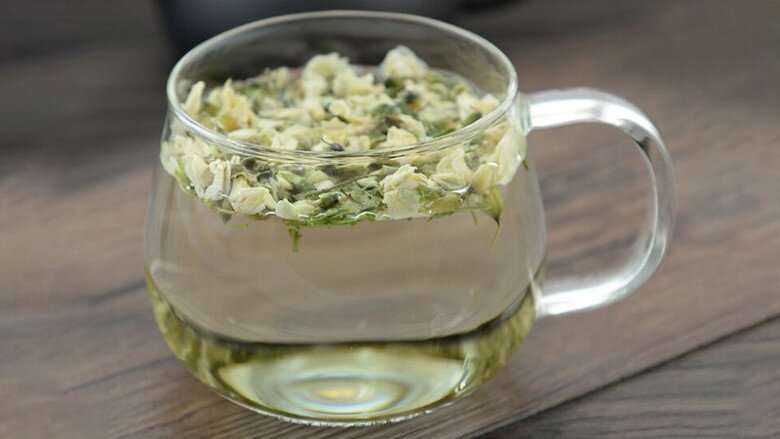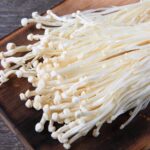In addition to being an ornamental plant, the flowers of the Japanese pagod tree have medicinal properties and offer various health benefits. However, not many people are aware of or utilize these flowers. The buds are the primary medicinal part, and they are harvested when they are large, about to bloom, and still fresh. The flowers are plucked early in the morning when it is dry, cleaned, and then sun-dried, or heat-dried using an earthen pot over a high flame to burn away 7/10 of their properties (this process is called ‘hoe hoa than’). The flowers may also be lightly fried (called ‘hoe hoa sao’) or used fresh. Up to 10% of the flowers may have already bloomed, and the fruits can also be used.

The Japanese pagoda tree is not just aesthetically pleasing but also offers health benefits. Photo: Evavn
According to Dr. Le Nhat Duy from the Ho Chi Minh City University of Medicine and Pharmacy – Campus 3, the flowers of the Japanese pagoda tree have cooling and bitter properties in traditional Chinese medicine. They are believed to increase resistance, strengthen blood vessels, reduce permeability, and enhance their elasticity. Additionally, they reduce oxygen consumption by the heart, lower blood pressure, prevent platelet aggregation, lower cholesterol, strengthen the heart, dilate coronary arteries, reduce bronchial and intestinal smooth muscle spasms, and possess anti-inflammatory and hemostatic properties.
When consumed as a tea, Dr. Duy notes the following potential benefits:
– Cooling and detoxification: The flowers help cool the body and are especially useful during the summer to reduce the feeling of heat.
– Regulating blood and stopping bleeding: The medicinal properties of the flowers help stop bleeding and can be used in cases of epistaxis and digestive tract bleeding.
– Protecting blood vessels: Modern research has shown that the flowers contain rutin, a type of flavonoid that strengthens blood vessels, reduces the risk of bleeding, and supports the treatment of high blood pressure.
While some sources suggest that the flowers can cure cancer, Dr. Duy emphasizes that, although compounds in the flowers, such as rutin and quercetin, have shown antioxidant and anti-cancer properties in laboratory studies, there is currently insufficient scientific evidence to confirm their effectiveness in cancer treatment.
Any potential cancer-fighting properties of the flowers would be limited to a supportive role and could not replace established treatment methods such as surgery, chemotherapy, or radiation therapy. Therefore, it is crucial not to rely solely on the flowers for cancer treatment but to combine their use with methods recommended by specialized doctors.

The flowers effectively protect blood vessels. Photo: Evavn
Due to the cooling nature of the flowers, Dr. Duy offers the following precautions:
– They should not be consumed by individuals with spleen and stomach coldness, pregnant women, or children under five years old without a specialized doctor’s recommendation.
– Prolonged and uninterrupted consumption is not advised without consulting an expert.
– Those with diarrhea, abdominal coldness, or a tendency to have cold hands and feet should exercise caution when using the flowers or limit their regular consumption. Excessive use may lead to diarrhea, abdominal coldness, or impaired digestive function.
For effective use, Dr. Duy recommends a dosage of 5-10 grams of dried flowers per tea infusion, consumed once or twice a day. If using flower powder, the dosage can be reduced to 3-5 grams per serving. It is essential to follow the advice of traditional medicine experts when using the flowers and to avoid prolonged uninterrupted consumption to prevent adverse effects.





































